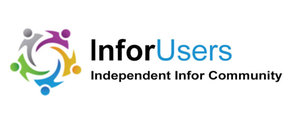The Problem: COVID-19 Demonstrates Care Delivery Gaps in Current Model
COVID-19 as a threat to the US population has demonstrated clear weaknesses and gaps in the current care delivery model. State and federal regulations that limited the ability to use telehealth for evaluating patients in their homes or in rural areas of the country have been exposed as indefensible in most cases, and those uses are now being reimbursed by CMS.
As citizens flock to web-based solutions, the need for providers to build out their digital virtual healthcare services for at-risk patients to better assess a patient’s clinical status and provide guidance for treatments is being demonstrated. A recent study by one hospital found that patients 85 years of age and older had a significant increase in the usage of the patient portal. In some cases, this use was probably performed by a caregiver or family member, but that study demonstrated how a crisis can quickly change consumer actions.
The US is very good at crisis management, and unfortunately, it takes a crisis for the US to drive innovations for care delivery. While not an IT example, the design and quicker development of less expensive ventilators by companies such as Dyson and Tesla and top engineering schools like MIT have shown that we can and should continue to evaluate all healthcare services and devices for continual quality improvement. A recent collaboration of different solutions led by Rx.Health provided a COVID-19 solution for supporting the treatment of the virus.[1]
Crises don’t just drive innovation; they expose the weaknesses of current systems.
The Solution: Digital Healthcare Solutions Supporting Home-Based Point of Care
What if the US could provide most of its healthcare delivery services for noninfectious diseases straight to consumers’ homes? These services could be supplemented with homecare services for patients with noncritical needs. What if this model were extended when the US returns to normalcy? What is the cost associated with a hospital room? What if this cost were eliminated or significantly reduced?
The current COVID-19 response is demonstrating that telehealth and consumer digital health solutions can provide an effective and timely response to assist consumers. Symptom checkers, chatbots and portals for assessing and guiding consumer actions, and remote monitoring of consumer vital signs (all of which are available via smartphones) manifest what the future of US healthcare delivery will become—predominantly patient and consumer focused!
These digital solutions will capture and feed patient and consumer data to provider databases with AI analytics to drive continual improvement in treatment protocols and delivery methodologies. This will require provider organizations to focus on creating normalized databases of patient information with well-defined metadata to optimize the AI capabilities.
The patient-centered care delivery model will be on steroids after the COVID-19 crisis has ended. Providers will be driven by consumers to extend and improve their digital service solutions. These services will likely be driven into the consumer homes via representative smart-assistant devices such as Amazon Alexa, Google Home, and Apple Home.
The Justification: Digital Healthcare Deliver Improves Care Access and Reduces Cost
Telehealth and supportive digital monitoring and care guidance solutions will allow a vast portion of the population to manage their healthcare from home. As the current crisis drives more consumers to work from home, the ability to arrange and experience virtual care from providers via telehealth and digital environments will drive healthcare service selection. The redesign of healthcare delivery based on telehealth and digital environments should improve healthcare access while driving down healthcare costs. These solutions are also likely to drive more efficient utilization of clinical labor resources.
The challenge for most provider organizations in the new healthcare delivery world will be what to do with the excess beds and ambulatory facilities with reduced needs.
The Players: Categories of Healthcare IT Solutions Driving the Delivery Evolution
Key digital healthcare IT solutions, many underpinned by AI, that will drive new delivery models:
- Telehealth will dramatically change healthcare delivery models; the regulatory changes for use and reimbursement during the COVID-19 crisis are proof of that ability.
- Symptom checkers and chatbots enable consumers to more effectively evaluate their healthcare conditions and receive effective treatment guidance.
- Smart home assistants will be able to connect with provider health systems.
Success Factors
- Integrating telehealth and supporting digital healthcare solutions with EHRs to create an environment that supports centralized patient data access with clinical decision support and data analytics.
- Providing well-designed consumer digital healthcare solutions that are available across a wide range of smart devices and are intuitive and easily learned.
- Continual monitoring, assessing, and modification of virtual consumer healthcare services that increases patient access, satisfaction, and loyalty.
Summary
The current healthcare delivery crisis driven by the COVID-19 pandemic has exposed the challenges of the current healthcare delivery system to respond in a timely and well-coordinated manner that reduces harm to our citizens and our county’s economy. The postmortem on how this country confronted the crisis will identify the need to extend providers’ abilities to deliver a virtual healthcare delivery environment for noncritical patients that improves access and flexibility for meeting consumers needs while also driving down costs. This new model will allow consumers to receive and manage their care conveniently from their homes or anywhere they have access to healthcare services via smart devices.
Virtual care deliver will likely reduce the number of current hospital beds and ambulatory clinics needed for providing care—a challenge for provider network investments. In a time of crisis, the ability to diagnosis and treat noncritical, noninfectious patients from their homes provides an innovative solution to address and lower future stresses on the healthcare delivery system.
[1] https://www.newson6.com/story/41900026/syndicate-of-health-systems-digital-health-leaders-rxhealth-launch-comprehensive-toolkit-to-unify-fight-against-covid-19
Photo credit: Adobe Stock, Tadamichi


